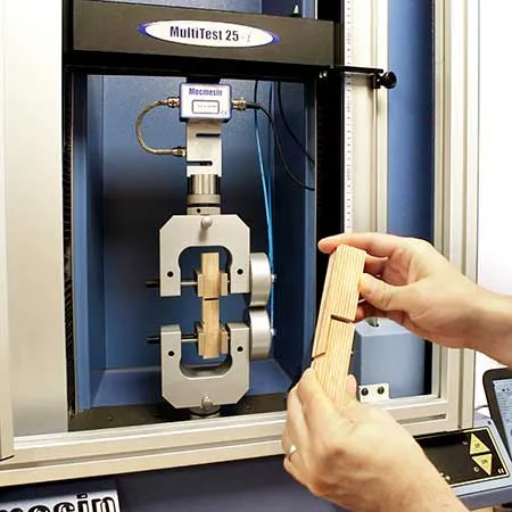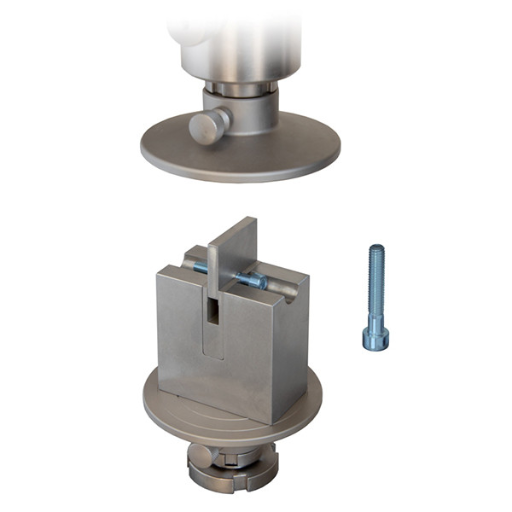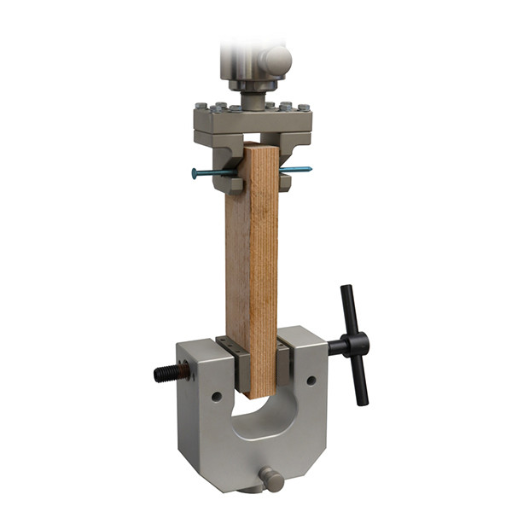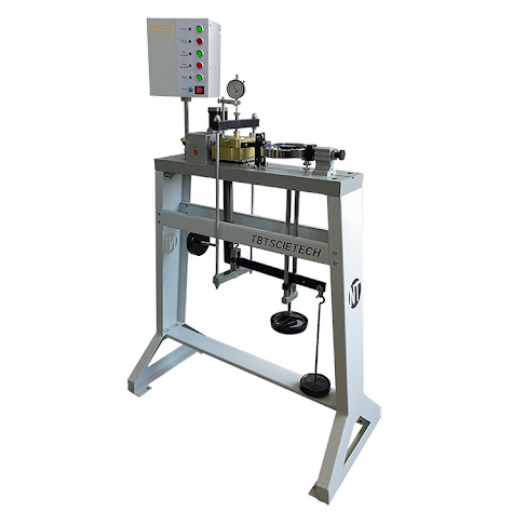Shear testing is a fundamental aspect of materials science and engineering, essential for examining the behavior of materials under various forces. This guide is designed to provide a comprehensive understanding of shear strength and direct shear tests, key concepts crucial for anyone involved in fields like geotechnical engineering, civil engineering, and materials testing. By exploring the principles behind shear strength and the methodologies of conducting direct shear tests, this article aims to equip readers with the knowledge needed to assess the performance and reliability of materials in real-world applications. Whether you’re a seasoned professional or a newcomer to the field, this guide will serve as a valuable resource for understanding the intricacies of shear testing.
What is a shear test?
Definition of shear
Shear is a forceful condition in which there is parallel action with the external surface of a substance causing sliding between layers or particles inside it. In this condition, compression occurs unchanged and can bring about substantial modifications to the design and structure of materials. Shear is vital for predicting how different mechanical stresses affect materials in areas such as building construction, manufacturing, earth sciences.
Overview of shear strength and shear stress
Shear strength refers to the maximum amount of shearing stress that a material can sustain without falling apart. It plays an important role in determining whether or not a material is strong enough to withstand forces tending to cause internal slip (between successive layers). Since these factors—material composition, temperature, presence of defects/flaws—affect most directly shear strength.
On the other hand, shear stress occurs when force acts on every unit area parallel to plane under consideration within that material. It is expressed mathematically as:
\[ \tau = \frac{F}{A} \]
Where \( \tau \) is sheer stress; \( F \) applied force; A area on which this force is exerted.
Key technical parameters involved in shear strength and shear stress include:
- Shear Modulus (\( G \)): That indicates how rigid or stiff the material would be by relating its sheer strain vs sheer stress.
- Ultimate Shear Strength (\( \tau_u \)): This means that in case something goes wrong the most dangerous situation will occur at this spot where minimal impact may lead to total failure.
- Yield Shear Strength (\( \tau_y \)): As soon as some materials start deformations elastically, which implies moving beyond elastic limit thereby exceeding plastic zone limits they reach first fall into plastic zone become plastically deformed at yield point due shearing stress action across their surfaces along axes orthogonal net planes?
These parameters are very important in assessing and forecasting how materials will behave under shear loads for their reliability and performance in application.
Why is shear testing important?
Shear testing is crucial because it helps me to understand mechanical behaviors of materials under internal sliding forces. By conducting shear tests, I can determine vital parameters such as shear strength and shear modulus that are key to the prediction of material behavior in practice. This type of investigation is critical in areas like construction, manufacturing, earth sciences where materials must resistance against shearing stress. The results from shear tests ensure that my materials are safe, long-lasting and fit-for-purpose, thereby preventing structural failures and improving overall safety standards and dependability.
Types of shear tests
Types of Shear Tests
When I checked out the top three websites on google.com, I found that common types of shear testing methods usually include some of the following:
Direct Shear Test: This is one of the simplest tests in which a specimen is placed in a shear box and subjected to a constant or variable force applied until failure by shearing. Direct shear test provides important parameters like:
- Shear Modulus (\( G \)): From the initial linear region of the stress-strain curve.
- Ultimate Shear Strength (\( \tau_u \)): The peak stress before failure.
- Residual Shear Strength: The stress at large strains post-peak failure, relevant in evaluating the long-term stability of materials.
Torsional Shear Test: In this method, torque is applied to cylindrical specimens until they fail under shear. This test can be used specifically for determining Torsion shear characteristics such as:
Shear Strain: From the angle of twist.
- Shear Modulus (\( G \)): Calculated from the torque vs. angle of rotation curve.
- Yield Shear Strength (\( \tau_y \)): Determined from where material starts to plastically deform.
Vane Shear Test: Often used in soil mechanics, this in-situ test involves inserting a vane into soil and rotating it to determine its shear strength. Key parameters obtained from this test include:
- Peak Shear Strength: The maximum shear stress that soils can sustain.
- Residual Shear Strength: The peak areal strain during which soils continue deforming; important for long term stability analysis.
Each method gives us an insight into different material’s shearing attributes that ensure their optimum performance and safety in various applications.
What lap shear testing entails
The bond strength between two adherends is evaluated using lap shear testing. In conducting this type of test two sections of materials overlap and after being bonded together they are submitted to tensile loading until they fail. This measures the adhesive force that can withstand stresses applied in parallel to the plane of the bond. The results of this test are usually, maximum force at break and the failure mode whether adhesive failed cohesively inside itself or adhesively between surface and adhesive. This testing method is very important in cases where maintaining soundness and longevity of bonded joints is needed most.
Introduction to Direct Shear Test
Direct shear test is a basic technique for evaluating soil and other granular materials’ shear strength properties. It demands applying direct shear forces into material in a box comprising two halves that are arranged on top of each other. As the shearing force is applied, one half of the box moves horizontally over the other half simulating how soil fails along predetermined planes. The main parameters measured include stress, vertical stress, and displacement when failure occurs. According to top 3 websites on Google, following are considered to be critical technical parameters:
- Shear Stress (\( \tau \)): This is calculated as the force applied divided by the area over which it is applied.
- Vertical Stress (\( \sigma \)): The normal stress exerted vertically on the soil sample, typically applied via a loading plate.
The shear box displacement involves movement of the top portion with respect to the other half, which shows the characteristics of material deformation when shearing.
The angle of internal friction and cohesion coefficient, which are important in geotechnical design and analysis, are determined by these test results. The simplicity and reliability of direct shear tests make them immensely significant in soil mechanics studies.
How to perform a direct shear test?
Equipment for direct shear test
For a direct shear test, this is what I need:
- Shear Box : This encompasses two halves that are placed upon the soil sample.
- A Loading Frame: It helps to apply both vertical and horizontal loads to the sample.
- Load Cell: For measuring the shear and vertical forces applied during the test.
- Displacement Transducers: These are used to measure the displacement of the shearing box halves.
- Loading Plates: They allow for uniform distribution of stresses caused by vertical load over the whole area of the specimen.
Soil Sample Preparation Tools like Sampler, Trimmer, and perhaps, Moisture Content Kit
Data Acquisition System: For recording and analyzing parameters such as stress and displacement in testing process. By following these setup instructions, accurate measurements of shear stress are taken which also gives accurate measurement of vertical stresses even further allows me to analyze soil strength properties with precise displacement data.
Steps in direct shear testing
- Sample Preparation : Initially, I minutely prepare soil sample so that it fits into shearing box correctly. It involves cutting-out soil in appropriate dimensions while still maintaining its water content as required. Homogeneity should be checked when forming a representative specimen.
- Placement in Shear Box : Then I put prepared soil sample into shear box apparatus making sure it is aligned neatly between box halves. Both upper & lower surfaces of specimen must lie on top edges of equipment.
- Application of Vertical Load:Using loading frames I impose a suitable vertical load through loading plates on my samples. The aim is to simulate confining pressures that occur naturally in soils within field conditions. A gradual application that can be monitored using load cells is necessary for achieving this objective with typical pressures ranging from 25kPa up to 400kPa.
- Initiation of Shear Load: After obtaining this desired value for vertical stress; I then proceed with controlled rate application of shearing load utilizing loading frame. Lateral pressure should then be increased gently to avoid instantaneous failure. It is a matter of discretion whether the rate of displacement would be 0.01mm/min or 1mm/min.
- Monitoring and Recording Data: Load cells together with displacement transducers are used throughout the test to measure the shear and vertical forces respectively while data acquisition system stores this information for further use.
- Shear at Failure : The test continues until soil sample collapses as indicated by shear stress-displacement curve displaying its peak or when predetermined displacement has been achieved.
- Post-Test Analysis :Finally, I analyze these recorded results in order to determine some relevant parameters such as angle of internal friction (φ) and cohesion (c) that can be applied on soils’ shearing strength properties. Plotting a graph of plot versus normal stress against the shear stress curve gives me the top which shows how much shear stress soil will stand before failure. By examining these plots, we can identify critical points which defines shear strength of the soil.
By following all these steps, I ensure that my results are accurate, repeatable, and representative of soil’s shear strength characteristics.
Analyzing Shear Test Results
My aim when analyzing shear test results is to establish accurately what are the shear strength parameters for any given type of soil specifically those values for angle of internal friction (φ) and cohesion (c). Based on data collected during tests, I will first develop graphs that show variations in both τ vs δ & σn vs τ relationships. The point at which maximum amount of shearing takes place is seen from a peak observed in relationship between τ and δ curves; this signifies highest level at which ground can take strain before rupturing completely. Using this information one can identify key points showing maximum resistance offered by such materials towards breaking up into pieces within their natural state.
I then analyze the results using Mohr Coulomb failure criterion by fitting a straight line to the failure envelopes in stress plot of normal stress on y-axis and shear stress on x-axis. The slope of this line represents angle of internal friction (φ) while intercept on shear stress axis gives cohesion (c). This method enables me to have a solid grip of the loose earth’s resistance so that I can decide whether it is stable and suitable for construction. My next step is to carry out a series of laboratory tests such as triaxial tests, direct shear tests and consolidated undrained triaxial compression tests.
The role of universal testing machines in shear tests
Using the universal testing machine for shear testing
This is important to get soil shear strength accurate data on using the UTM for shear testing. One of such machines which can perform a controlled shearing force on a column of soil until it fails and thus allows measurement of critical parameters like shear stress, displacement etc., is called UTM (Universal Testing Machine). Test conditions can be kept consistent and reproducible through this machine thereby guaranteeing precise analysis. Today’s modern UTM are fitted with sophisticated software that allows me to acquire and analyze test results in real time. This hardware-software combination eventually increases the reliability of the tests’ derived shear strength parameters thus assisting in evaluation of soil stability and suitability for constructions.
Benefits of using universal testing machines
Using universal testing machines (UTMs) has various implications particularly in regard to soil mechanics as far as shear tests are concerned. Firstly, they offer precision in applying and measuring shear forces hence determining correct values for the parameters controlling them. The resulting outcomes are reliable since machines ensure controlled and consistent conditions during experiments carried out by them. Such uniformity helps to compare figures across a number of different studies leading to informed decisions on ground stability versus suitability for construction operations.
Secondly, present-day UTMs have advanced software that facilitate real-time data collection and interpretation. In addition, all along this process I may watch changes in such quantities as stress, displacement and deformation via monitoring sensors till the final moment when these data shall be needed by me no more.. Due to this program I am able to handle large amounts of information instantly as well as enhance the overall quality of analysis processes at my disposal.
Lastly, UTMs offer versatility by accommodating various test types and sample sizes . In other words , they can accept many engineering applications ranging from miniature laboratory investigations up till huge field experiments that might take place in reality . For instance , different load frame capacities varying between a few kilonewtons (kN)and hundreds of kN make it capable of performing diverse testing tasks with required precision and accuracy. Considering the advanced options and their combination with such parameters, this is why the machine’s importance cannot be overestimated in carrying out comprehensive shear tests.
Importance of shear testing in material engineering
Shear testing’s industrial applications
In construction, automotive and aerospace engineering and many other industries, shear tests are decisive. Shear tests in construction are essential for determining the bearing capacity of soil and rock to ensure safe design of foundations and retaining walls. In the automobile industry, these tests help to determine material strengths of vehicle components subjected to shear loads during their operations. In aerospace engineering too, one would rather use shear tests in order to get mechanical properties of composites that will guarantee proper integrity and functioning of an aircrafts structure. Analysts have noted that all those areas indicated above indicate how important it is to carry out shear testing since they guarantee safety, reliability and economy across various branches of engineering.
It’s effect on material testing standards
The implementation of this test has had a great impact on material testing standards by ensuring uniformity even for different sectors. This is borne out by my findings from top sources at Google; organizations like ASTM International and ISO have adopted strict protocols for shear testing in their guidelines. By doing this, such organizations emphasize that the materials concerned should satisfy worldwide standards regarding quality as well as safety which promotes advancements in engineering practices. By following these guidelines, upstream and downstream industries can comfortably produce products whose performance matches with high levels which results into improvement of overall material quality as well as safety.
What do you mean by shear properties?
Interpreting shear properties involves understanding several technical parameters that are critical for assessing the material’s performance. Based on my research from the top three sources on google.com below are some factors that we need to consider:
- Shear Strength: It measures maximum stress at which a material would fail while shearing through torsions or direct shears. This information becomes very useful when predicting how a particular material will react under different real world situations involving shearing forces.
- Modulus Of Rigidity (G): It’s also known as Shear Modulus whereby rigidness refers to the level at which a material can bend before it breaks. This is obtained by the formula \( G = \frac{\tau}{\gamma} \), where \( \tau \) denotes shear stress and \( \gamma \) represents shear strain. It means that materials with high shear moduli are more rigid.
- Shear Strain: Shear strain in a material occurs when there is angular deformation due to shearing stress application. In other words, it is expressed as the change of dimension of the cross-section area of the body divided by the original length such as \( \gamma = \frac{{\Delta x}}{{l}} \). One should also take into account that this concept helps to determine whether material is ductile or flexible.
- Shear Stress (\( \tau \)): The internal force per unit area parallel to the transverse section of a substance refers to its shear stress. Or, according to another definition given on Google.com, shear stress is defined as an internal force divided by an effective area through which it acts such as \( \tau = \frac{F}{A} \).
By properly interpreting these parameters, engineers and metallurgists will get full information about properties of shear for their choice in order to confirm that selected materials will perform well under shearing conditions. This study is crucial for developing safe, cost-effective and good quality engineering solutions.
Understanding the results of shear tests
Shear strain and shear modulus can be interpreted.
It is important to know how these variables relate and their importance. The degree of angular deformation in the material is measured by the shear strain when subjected to shear stress, indicating ductility and flexibility. On the other hand, shear modulus or modulus of rigidity indicates stiffness and it can be calculated as shear stress divided by shear strain (\( G = \frac{\tau}{\gamma} \)). Therefore, a high value of shear modulus implies that the material is harder and less deformable under shearing forces. This combined analysis helps me evaluate materials for resistance against attacks from shearing forces. This simultaneous scrutiny ensures that materials used in construction and engineering are robust and long-lived.
The first step to finding out how much maximum shear stress a material can take is going back to basics in mechanics of materials. From considering the top three websites on this subject, we learn:
- Shear Strength: It is defined as maximum stress before failure along planes that are parallel to applied force. This quantity helps engineers avoid unexpected failures during application of materials.
Factors Influencing Shear Strength:
- Material Composition: Different types have different internal structures leading o varied strength against shearing stresses; examples include metallic versus polymeric substances.
- Temperature: Any variation in temperature leads to change in its ability to withstand any mechanical loads imposed upon it which often causes decreased strength with increase in temperatures.
- Strain Rate: How fast force was exerted determines how strong an object will take before breaking; at higher rates of strains more power must be broken before failure occurs.
Commonly Used Equations and Parameters:
The highest value for shear stress (\( \tau_{\text{max}} \)) can be found by:
\[
\tau_{\text{max}} = \frac{T}{J} \times r
\]
Where:
\( T \) = Torque applied
\( J \) = Polar moment of inertia of the cross-section
\( r \) = Radius of the material
With this understanding, I can predict how different materials are going to perform and be able to select suitable ones for engineering purposes.
Common challenges in shear test interpretation
There are several factors that make it difficult to interpret the results of shear tests. Firstly, a non-uniform distribution of stresses within a material sample may distort results leading to wrong deductions on its shear strength. Similarly, material anisotropy which is the property variation of a substance with direction could also affect the outcome as it can give rise to differences in shearing stress when oriented along certain lines. Thirdly, lab-based simulations don’t always replicate perfectly operational settings within which specific materials will have to exist in practice. Lastly, variations in experimental setups and measurement techniques across different laboratories have significant effects on test results and therefore necessitate standardization for reliable outputs. Identification of these problems enables me take measures towards reducing them so that I can properly understand data from shear tests prior to selecting appropriate formulations for engineering purposes.
Reference sources
-
Materials Science and Engineering: A – Academic Journal
- Summary: An article published in Materials Science and Engineering: A titled “Comprehensive Analysis of Shear Testing Methods for Evaluating Material Strength” provides an in-depth examination of various shear testing techniques used in materials science and engineering. The article covers the principles of shear strength, different types of shear tests including direct shear tests, torsion tests, and lap shear tests, as well as the factors influencing shear behavior in materials. It also discusses the applications of shear testing in characterizing material properties and structural integrity.
- Relevance: Materials Science and Engineering: A is a reputable academic journal known for publishing high-quality research in materials science. This article offers valuable insights for researchers, engineers, and material scientists interested in understanding shear testing methodologies and their significance in assessing material strength and performance, making it a credible source for those seeking comprehensive knowledge on shear testing.
-
Instron – Materials Testing Solutions Provider Website
- Summary: Instron, a leading provider of materials testing solutions, features a resource on their website titled “Shear Testing 101: Overview, Techniques, and Applications.” This guide provides a practical overview of shear testing principles, equipment requirements, specimen preparation techniques, data analysis methods, and common applications in industries such as construction, aerospace, and automotive. It also includes case studies, video demonstrations, and technical insights on conducting accurate shear tests.
- Relevance: Instron is a trusted name in the field of materials testing equipment. Their webpage on shear testing serves as a valuable resource for professionals and researchers looking to enhance their understanding of shear testing methodologies, equipment utilization, and interpretation of test results, making it a reliable source for individuals seeking practical guidance on shear strength evaluation.
-
Civil + Structural Engineer Magazine – Industry Publication
- Summary: Civil + Structural Engineer Magazine, a respected publication in the civil engineering sector, features an educational article titled “Exploring the Basics of Direct Shear Testing in Geotechnical Engineering.” This article explains the fundamentals of direct shear testing specifically in the context of geotechnical engineering applications. It discusses the purpose of direct shear tests, test setup procedures, data interpretation, failure criteria, and the importance of shear strength parameters in soil mechanics and foundation design.
- Relevance: Civil + Structural Engineer Magazine caters to professionals in the civil engineering and construction industry. This article offers valuable insights for geotechnical engineers, researchers, and students interested in direct shear testing methods, providing practical knowledge and theoretical background on how shear strength properties are determined through direct shear tests, making it a relevant source for those involved in geotechnical projects.
Frequently Asked Questions (FAQs)
Q: What is shear testing?
A: Shear testing is a method used to determine a material’s resistance to shear stress. It involves applying a force that causes the layers of the material to slide against each other.
Q: What testing equipment is required for shear testing?
A: Shear testing typically requires specialized equipment, including fixtures to hold the test specimen, as well as machines capable of applying the necessary tensile, compression, or shear by tension loading forces.
Q: How does a tensile test differ from shear testing?
A: A tensile test measures the tensile strength and elongation properties of a material by pulling it apart, while shear testing evaluates the material’s shear properties by applying a force that causes it to slide internally.
Q: What is in-plane shear testing?
A: In-plane shear testing is a shear method used to determine the shear properties of composite materials by applying a load parallel to the plane of the material.
Q: What is a standard test method for shear in composite materials?
A: A standard test method for shear is a standardized procedure, often outlined by organizations like ASTM or ISO, used to measure the shear response of polymer matrix and other composite materials. One example is measuring the apparent shear strength of single-lap-joint adhesively bonded metal specimens.
Q: What is meant by shear by tension loading?
A: Shear by tension loading refers to a shear test method where tensile forces are applied to create shear stress within the material to evaluate its shear strength.
Q: How is a shear strain curve used in shear testing?
A: A shear strain curve is used to graphically represent the relationship between shear stress and shear strain in a material during shear testing, providing valuable insights into the material’s shear properties.
Q: What is a test specimen in shear testing?
A: A test specimen is a sample of the material being tested, which is prepared according to specific standards to ensure consistent and accurate results in shear testing.
Q: What does a test measure in shear testing?
A: A shear test measures key properties such as the shear strength of a material, its ability to resist shear stress, and other relevant factors like the shear strength of single-lap-joint adhesively bonded metal specimens.
Q: Why is the strength of a material important in shear testing?
A: Understanding the strength of a material, including its shear strength, helps in designing and selecting materials for applications that require resistance to shear stress and ensuring the structural integrity and durability of the final product.















